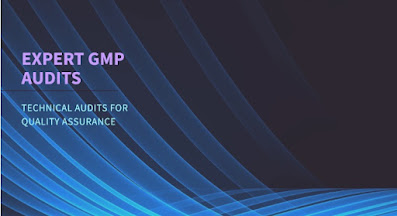Good Manufacturing Practices (GMP) audits are essential to ensuring that drugs are consistently produced and controlled to the quality standards appropriate for their intended use. GMP audits help identify potential non-compliance and gaps in the manufacturing process. Here are some common techniques used during pharmaceutical GMP audits:
1. Document Review
- Purpose: To assess whether the company is following its standard operating procedures (SOPs), batch records, and other regulatory documents.
- Technique: Reviewing key documents like manufacturing records, validation protocols, deviation reports, and training records to ensure they are accurate, up-to-date, and compliant with regulatory standards.
- Key Areas to Review:
- Batch production and control records
- Validation reports (equipment, processes)
- Change control documentation
- Supplier and raw material certificates
2. Walkthrough Inspections
- Purpose: To observe operations in the manufacturing facility and ensure compliance with GMP standards.
- Technique: Auditors physically inspect the facility to check equipment maintenance, cleanliness, workflow, and product segregation.
- Key Areas to Inspect:
- Equipment calibration and maintenance
- Cleanliness and hygiene
- Personnel practices (e.g., PPE usage)
- Environmental conditions (e.g., temperature, humidity)
3. Employee Interviews
- Purpose: To evaluate the knowledge and understanding of GMP practices among staff.
- Technique: Interviewing personnel, especially those involved in critical activities like production, quality control, and quality assurance, to confirm that they are following procedures and are aware of GMP requirements.
- Key Questions:
- How do you handle deviations or non-conformance?
- Can you describe the SOP for your process?
- What steps are taken to ensure cleanliness during production?
4. Risk-Based Auditing
- Purpose: To prioritize areas of the manufacturing process based on risk and impact on product quality.
- Technique: Using risk-based tools (like risk matrices or Failure Mode and Effect Analysis, FMEA) to focus on high-risk areas (e.g., critical quality attributes, critical equipment).
- Key Areas to Focus On:
- Areas of previous non-compliance
- Critical control points in the manufacturing process
- New or updated equipment and processes
5. Review of Validation and Qualification
- Purpose: To ensure that the systems and equipment used in production are validated and qualified properly.
- Technique: Reviewing validation protocols, results, and ongoing monitoring of equipment and processes to ensure they are capable of consistently producing high-quality products.
- Key Areas:
- Equipment qualification (IQ, OQ, PQ)
- Process validation (e.g., sterilization, mixing)
- Cleaning validation
6. Review of Quality Control and Testing
- Purpose: To verify that the products are tested according to the required specifications and meet quality standards.
- Technique: Auditing the quality control lab’s procedures, records, and test results, ensuring proper sample handling, testing, and documentation.
- Key Areas:
- Laboratory testing protocols
- Calibration of instruments
- Stability testing procedures
- Testing for contaminants or impurities
7. Supplier Audits
- Purpose: To ensure that raw materials and components used in the production process meet required quality standards.
- Technique: Auditing suppliers’ facilities to ensure that their practices comply with GMP requirements.
- Key Areas:
- Supplier quality systems
- Certificates of analysis (COA)
- Supplier audit history
- Material traceability
8. Deviation and CAPA (Corrective and Preventive Action) Review
- Purpose: To assess how effectively the company addresses issues when deviations from GMP standards occur.
- Technique: Reviewing deviation reports and CAPA logs to ensure that problems are identified, investigated, and addressed promptly.
- Key Areas:
- Root cause analysis
- Corrective actions taken
- Preventive measures to avoid recurrence
9. Change Control Management
- Purpose: To ensure that any changes made to the manufacturing process, equipment, or facilities are properly controlled.
- Technique: Reviewing change control procedures and ensuring that all changes are documented, evaluated for impact on product quality, and implemented according to regulatory guidelines.
- Key Areas:
- Approval and documentation of changes
- Risk assessment of changes
- Validation of new processes or equipment post-change
10. Audit of Environmental Control Systems
- Purpose: To verify that environmental conditions such as air quality, temperature, and humidity are controlled in accordance with GMP.
- Technique: Inspecting the facility’s environmental control systems, including HVAC (Heating, Ventilation, and Air Conditioning), and reviewing environmental monitoring data to ensure compliance.
- Key Areas:
- Air filtration and particle control
- Temperature and humidity monitoring
- Cleaning and sanitization protocols
11. Track and Trace Systems (Serialization)
- Purpose: To ensure compliance with regulations related to product traceability and anti-counterfeiting.
- Technique: Auditing systems that track and trace products throughout the supply chain, including serialization and barcoding, to ensure proper labeling and identification.
- Key Areas:
- Serialization accuracy
- Reporting and recordkeeping
- Traceability of batches
12. Audit of Distribution and Storage
- Purpose: To ensure that finished products are stored and distributed under proper conditions.
- Technique: Reviewing storage areas and transportation practices to confirm that they comply with GMP, ensuring product integrity during the entire distribution process.
- Key Areas:
- Temperature-controlled storage
- Packaging integrity
- Documentation for shipping and receiving
Conclusion
A thorough GMP audit involves a combination of documentation review, on-site inspection, employee interviews, and targeted evaluations of critical processes. Effective auditing helps pharmaceutical companies identify weaknesses, address non-compliance, and ensure the safety, quality, and efficacy of their products.

Comments
Post a Comment